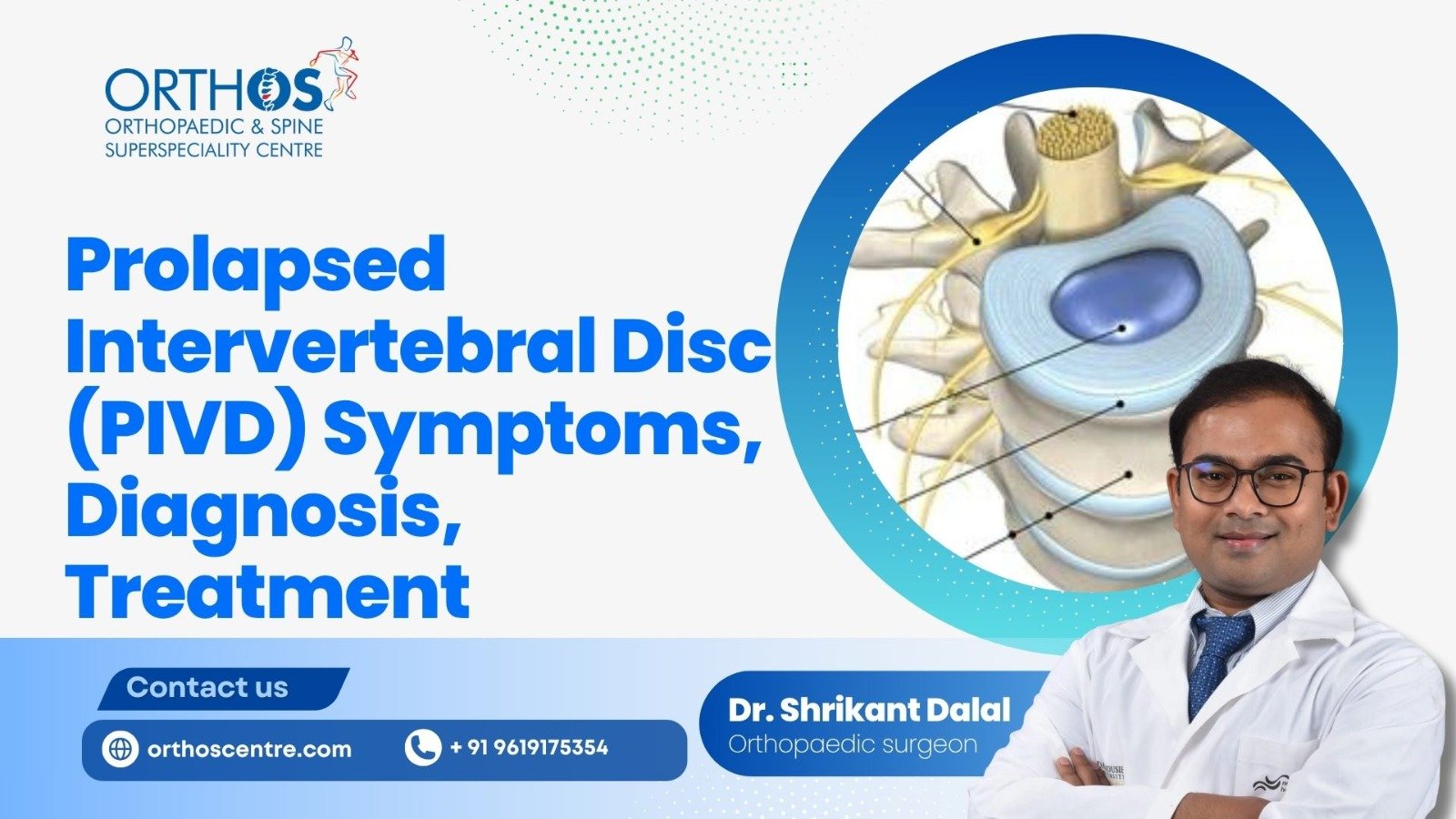A Prolapsed Intervertebral Disc (PIVD), also known as a herniated or slipped disc, is a common spinal condition that can cause persistent back or neck pain. The spine is made up of vertebrae, and between each vertebra lies a cushion-like structure called the intervertebral disc, which acts like a shock absorber and allows flexibility.
What Happens in PIVD (Slipped Disc)?
Each disc consists of:
- Annulus Fibrosus: The tough, outer layer.
- Nucleus Pulposus: The soft, gel-like center.
When the annulus weakens or tears, the nucleus may protrude outward, irritating nearby spinal nerves—this is what we call disc prolapse.

Causes of PIVD
The most common reasons include:
- Age-related disc degeneration: Natural wear and tear reduce disc elasticity and hydration.
- Sudden injury or trauma: Falls, heavy lifting, or improper posture.
- Repetitive strain: Jobs involving bending, twisting, or prolonged sitting.
- Genetic predisposition: Some individuals may have weaker discs by birth.
Common Symptoms of PIVD (Slipped Disc)
Depending on the disc’s location, symptoms may vary:
- Localized Pain – e.g., lower back or neck.
- Radiating Pain – Pain may travel down the legs (sciatica) or into the arms.
- Numbness & Tingling – Due to nerve compression.
- Weakness in Limbs – Difficulty lifting objects or walking properly.
If symptoms last longer than a few days or worsen, timely consultation is crucial.
Diagnosis of PIVD
At Orthos Centre, Dr. Shrikant Dalal performs a comprehensive evaluation, which includes:
- Clinical Examination – Checking nerve function, muscle strength, and flexibility.
- MRI Scan – To identify the exact disc and extent of compression.
Accurate diagnosis ensures the right treatment plan tailored to the patient’s condition.
Treatment Options for PIVD (Slipped Dis)
1. Conservative (Non-Surgical) Treatment
Most patients improve without surgery.
- Medication – Pain relievers, anti-inflammatory drugs, and muscle relaxants.
- Physical Therapy – Customized exercises to strengthen spinal muscles and improve posture.
- Rest & Activity Modification – Avoid heavy lifting and prolonged sitting.
- Epidural Steroid Injections – To reduce inflammation and nerve irritation.
2. Surgical Treatment
If pain persists or nerve compression becomes severe, surgery may be advised.
- Microdiscectomy / Discectomy – A minimally invasive procedure to remove the herniated portion of the disc and relieve pressure on the nerves.
Dr. Shrikant Dalal specializes in advanced spine surgeries with the goal of faster recovery and minimal discomfort.
Recovery & Lifestyle Modifications of PIVD
- Maintain correct posture while sitting or lifting.
- Engage in regular physiotherapy exercises.
- Maintain a healthy body weight.
- Avoid sudden twisting movements.
Rehabilitation plays a major role in preventing recurrence and restoring spinal strength.
Conclusion
A Prolapsed Intervertebral Disc can affect mobility and overall quality of life, but with early diagnosis and the right treatment, the condition is highly manageable. Under the expert care of Dr. Shrikant Dalal at Orthos Centre, patients receive personalized treatment plans designed to relieve pain, restore function, and support long-term spinal health.


